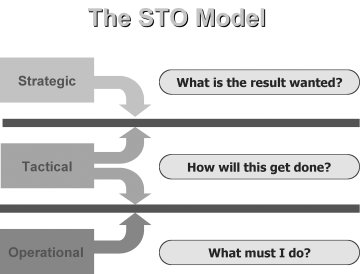Chapter 1
Project Management and Accounting
In today's business world, we often hear the terms “strategic alignment” and “mission and objectives.” Usually these terms are used in phrases such as: “We must ensure that our business units are strategically aligned with our mission and objectives.” In many companies, large and small, it often seems that one area of a company does not know what is happening in other areas; in some cases, one area may even be working against other areas within the same company. Quite often there is a large gap between what the top levels of the organization are saying and what is happening at an operations level within the company.
In our last book, The Essentials of Strategic Project Management, we spoke about the STO model.1 STO stands for strategic, tactical, and operational. These three levels of operation inherently have typical communication problems that many companies need to deal with (see Exhibit 1.1). Each level of the model represents a different level of a company. Strategic is the executive level, where decisions are made about the purpose and direction of the organization. Tactical is the management level of a company, where decisions are made as to how to carry out strategy. Operational is the lowest level of the company, and represents where people actually execute the work.
Exhibit 1.1 Strategic, Tactical, and Operational Model


